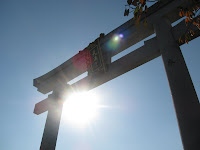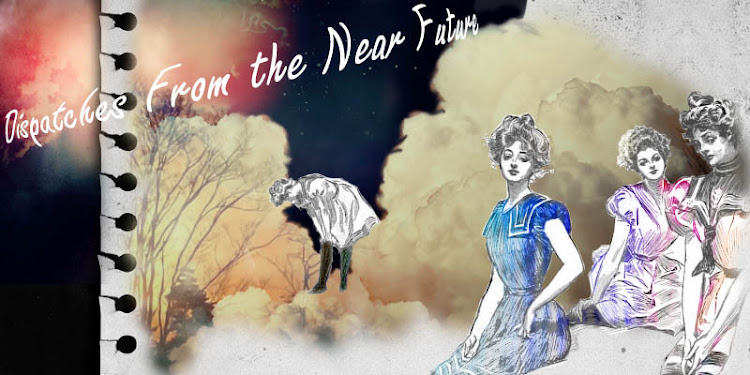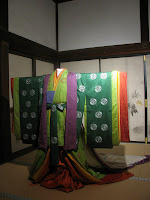







Well goodness gracious me! I’ve just looked at my last post only to find that the last time I posted was before climbing Mt. Hiei. If that’s the case then I am most certainly lackluster about new posts and this time more so than usual! Once one settles into a routine, it seems, it becomes easy to forget to update ones blog. Alas. Luckily I’ve got plenty of pictures to remind me exactly what I’ve been up to for the past three weeks or so…a month? More? I’m bad.
Before ascending Hiei, a few friends of mine and I took advantage of the Imperial Palace across from Doshisha being open to the public. While being foreigners gives us the advantage of being able to waltz in nearly unannounced whenever we please, it was nevertheless enjoyable to crush ourselves into the throng of Kyoto-ites and other such tourists itching to view what lies beyond the somewhat foreboding walls of the Gosho. Once we made it past the somewhat lax bag check, we clamored on in to view the extensive grounds, which seem so much more spacious than what the walls surrounding it suggest. Of course, as it can take a good twenty minutes to walk around them, it is perhaps no wonder.
The interior is well kept, especially for the big event. The pillars are painted a stark red and many scrolls and items of import such as armor or musical instruments were displayed about. Interior screens depicting a number of art styles could also be seen. Simple black lines on white paper suggested cranes and other paintings were similar to those of Nijo Castle, elaborate paint and gold stark against cool colored woods. The gardens are also quite neat, small bridges offset by large, old trees, arching forward over the calm, clear pond waters. Even in the crowd, the entire palace held a certain amount of austerity and quiet. After a little over an hour of wandering about, we had grown tired of the periodic rain and vowed to return on another day to view the extensive gardens we were unable to make time for.
A few days later, on our day off, we made our ascent of Mt. Hiei. Emperor Kammu chose Kyoto as a location for the capital in 795 because of its protective mountains. Not only a perfect Zen capital in the days of Heian-Kyo, the mountains served to protect the prosperous court. Mt. Hiei is one such mountain along with Kurama, which we climbed a post ago! It takes a great amount of time to reach the peak, especially when taking ones time. There has also been a history of marathon monks, who climb the mountain day and night, with only a few hours of sleep in between, for years. Just one climb was certainly enough for me for a while. After starting out on rough terrain for quite some time, one makes it to a series of stairs, which prove even more difficult to climb. It is by far not the most difficult mountain to climb, but perhaps next time better shoes than Converse are in order! Once reaching the top, we enjoyed our lunch outside, freezing our poor little noses off, as it was absolutely glacial, and then heading into the café for some tea and soup. It was, admittedly, a little strange to find a lovely flower garden and café at the top of a mountain, which we had been climbing with vivacity and vigor and dirt and mud for the past few hours, but a little civilization was also a relief.
The view offered from Hiei was absolutely spectacular. To one side is Lake Biwa and to the other one can see Osaka far in the distance. The nice warm watchtower located at the top improves the view. We ended up taking the cable car down, as it was getting dark after we had visited the temples located on the far side of the mountain from Kyoto. In these temples can be found the Zoroastrian eternal flame and very, very cold floors on your sock clad feet! They were quite beautiful—alas no pictures were permitted—and there was a huge bell patrons may ring.
A week or so later a few friends and I then headed to Nagaoka-Tenmangu, another temple located in Nagaoka-Kyo by my house. This temple in particular is known for its relationship to education, and if someone desperately wishes to pass an exam or do well in school, they come to pray at Nagaoka-Tenmangu. As far as size, it is not the most impressive temple in Kyoto I have been to, but its location is absolutely stunning. Set against the mountains and near the Nagaoka-Tenjin stop on the Hankyu, to get to the temple from the avenue, one must traverse a large bridge spanning a clear reservoir-like lake. Passing under a large stone tori-gate, one enters the temple complex. We had gone on a day where parents take their three or five year old children to shrines or temples, dressed to the nines, and pray. Thus there were children everywhere, the girls in flashy furisode and the boys taking cool stances as samurai. They were absolutely adorable!
With a bit of shame I admit that far too many days went by before I took advantage of living in a city like Kyoto. At the beginning of fall break, I headed out with a few friends to see Heian-Jingu. Unfortunately we took too much time in getting there and they were half an hour away from closing when we did indeed arrive, but after a short while there, we decided that it was perhaps a little more kitschy than we were accustomed to. Thus we headed off in the direction of Kodaiji for a temple light up. Light ups are really big in Kyoto during the fall season, the powerful lights meant to accentuate the beauty of both the temple structures and their juxtaposition with the fall foliage. As a result of their popularity, the lines to enter temples during these times are incredibly long, some requiring hours of waiting. Of course, my host mom provided me with four tickets to a temple light up, allowing us to skip past the line! As far as experiences go, it was most certainly an interesting one. While I am prone to taking hoardes of photos at every place I go, taking photos in the dark is particularly difficult, even with powerful lights highlighting the trees and the flash on my camera. And thus I was contented to put my camera away and simply enjoy the beauty of the temple and the amazing flow of people. The most notable moment was when we turned the corner to find the trees standing over a wonderfully clear pond, every detail of the night as clear as a mirror on the pond’s surface. Afterwards we went and shamelessly feasted on Italian food!
Later that week is when the real adventure portion of the vacation begins…but I’m exhausted and this post is getting long! Thus I will write the next three events over the weekend and post more on Monday! Coming up: Vacationing in sunny Shirahama, getting spirited away at Fushimi Inari, and visiting monks in Mibu! There are pandas involved.













































